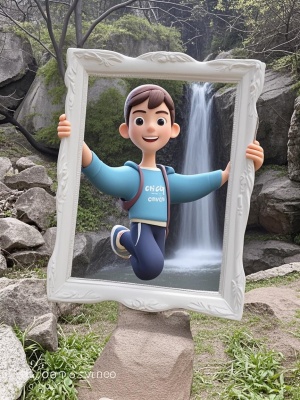The Captivating World of 3D Oil Paintings: A Modern Artistic Revolution
Introduction: The Fusion of Tradition and Innovation
3D oil paintings represent an exciting evolution in the art world, blending centuries-old techniques with cutting-edge technology. These multidimensional artworks create stunning visual illusions that appear to leap off the canvas, offering viewers an immersive experience unlike traditional two-dimensional paintings. At MediaAI Art Gallery, we've witnessed growing interest in this innovative art form that pushes creative boundaries while maintaining the rich texture and depth characteristic of classical oil painting.
The Science Behind 3D Oil Paintings
How Depth Perception Works in Art
3D oil paintings manipulate visual perception through several techniques that trick the brain into seeing depth where none physically exists. Artists achieve this remarkable effect through:
- Strategic layering of paint to create physical texture
- Precise shadow and highlight placement
- Perspective distortion techniques
- Optical color blending
Materials and Techniques
Creating authentic 3D oil paintings requires specialized materials beyond traditional oil paints. Many artists incorporate modeling paste, gel mediums, and even small objects to build up surface texture. The process typically involves:
- Creating an underpainting to establish values
- Building texture with thick impasto techniques
- Applying glazes for depth and luminosity
- Adding final highlights that "pop" from the surface
Applications and Popular Themes
3D oil paintings have found particular popularity in several domains, as showcased in our landscape scenes collection. Some of the most sought-after subjects include:
- Hyper-realistic portraits with striking depth
- Surreal landscapes that defy perspective
- Abstract compositions with dramatic texture
- Contemporary interpretations of classical themes
Challenges and Solutions in 3D Oil Painting
| Challenge | Solution |
|---|---|
| Paint cracking due to thick layers | Use flexible mediums and proper drying techniques |
| Maintaining color harmony | Plan color relationships in the underpainting stage |
| Creating convincing shadows | Study light physics and use multiple light sources |
| Preserving the artwork | Apply protective varnishes and proper framing |
The Future of 3D Oil Paintings
As technology advances, artists are experimenting with hybrid approaches that combine traditional oil painting with digital elements. Some innovators are even incorporating augmented reality features that activate when viewed through smartphones, creating interactive experiences. For those interested in the digital frontier of art, our AI Painting Guide explores these exciting developments.

According to recent studies from the Tate Modern, artworks incorporating three-dimensional elements have seen a 37% increase in collector interest over the past five years, signaling strong market potential for this art form.

Conclusion: A New Dimension in Artistic Expression
3D oil paintings represent more than just a technical innovation—they offer a fundamentally new way to experience art. By breaking free from the constraints of two-dimensional representation, these works engage viewers on multiple sensory levels, creating memorable encounters with art that linger in the imagination. Whether you're an artist looking to expand your practice or a collector seeking distinctive pieces, 3D oil paintings offer exciting possibilities worth exploring.

For those inspired to begin their own 3D oil painting journey, we recommend starting with our AI Art Guide, which includes valuable resources for both traditional and digital art techniques.